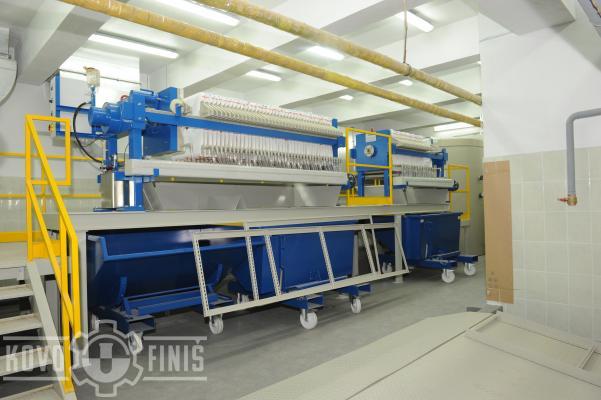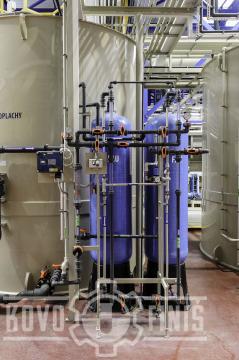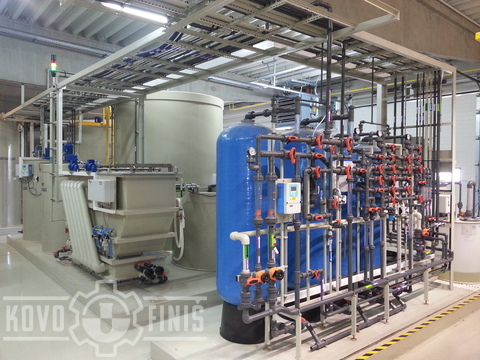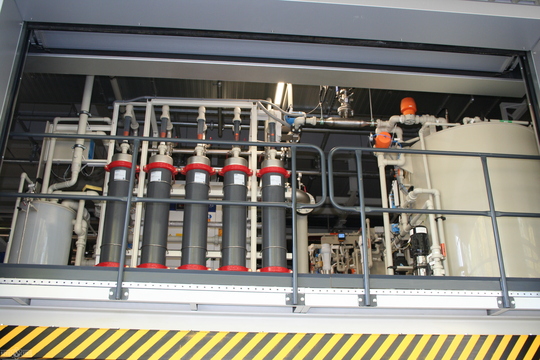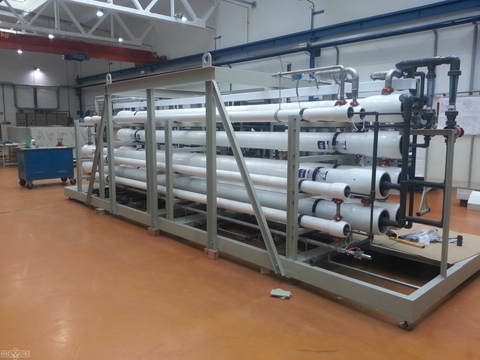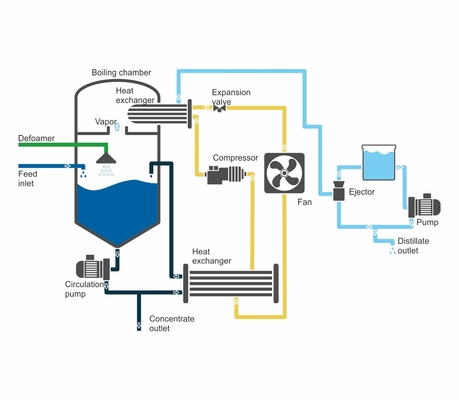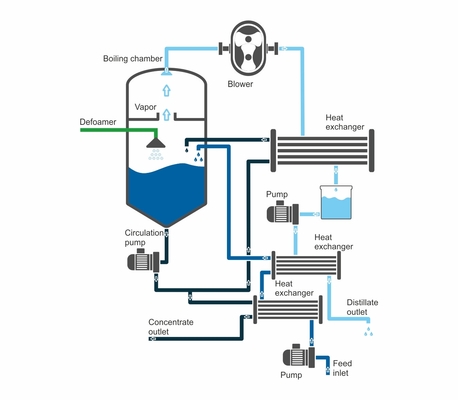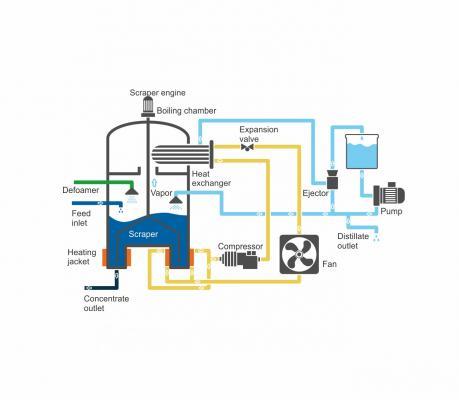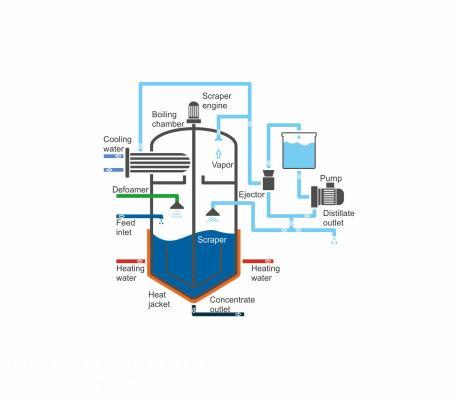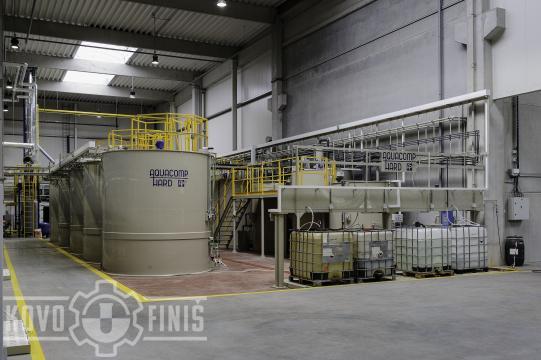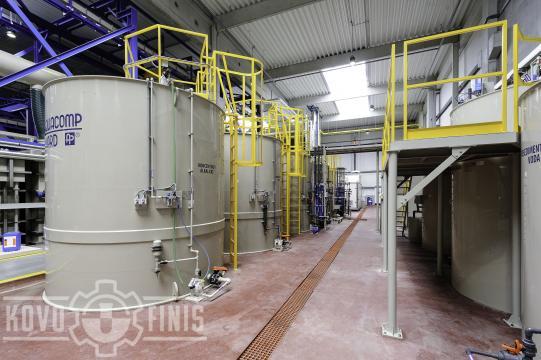Industrial wastewater treatment plants
Only the perfect technology is able to fulfill permanently increasing requirements to protect environment and natural resources. We offer and deliver wide range of technologies for waste water treatment within the frame of the programme/platfrom "clear water in industry". Experiences from various fields of industrial application ensure the right choice of a technology, use of components and prove reliability for long operating lifetime. Our know-how uses the most up to date processes and best available technologies (BAT). On their basis, we are ready to submit optimal solution for particular project. We guarantee proposed technology, production of single parts, installation and equipment utility as well as our services after delivery. We are able to provide experiences of our own specialists in negotiation with local and environmental administration authorities.
We have suitable solutions for individual customer needs and requirements for waste-water treatment. We know proper legislation concerning environmental regulations. Our plants and equipment set high standard in environmenal care.
For waste water treatment of:
-
acids and alkali contents
-
oil, grease and other petroleum products
-
cyanide contents
-
chrome - VI contents
-
nitrite waste-waters
-
oxidative and reductive contents
-
heavy and other metals (such as Ni, Cu, Cr, Pb, Sn, Ag, Zn, Fe, Al etc.)
-
complex solutions
-
poisonous anions (phosphate, fluorides etc.)
-
ammonia ions contents
-
over-spray treatment from paint shops
-
dispersion contents i.e. teflon or graphite
We deliver:
-
turnkey automatic batch and continuous plants for waste-water treatment and neutralisation
-
emulsion breaking plants
-
chemical dosing and preparation units
-
sludge separators (batch or continuous)
-
gravel and band filters, sorption filters
-
ion-exchangers
-
reactors, storage tanks, thickeners
-
flotation units
-
reactors and tanks
Cleaning - batch and continuous mode
The WWTPs we supply can be either batch, continuous or combined. The design of the WWTP depends on the volume and nature of the waste water.
Batch mode
The batch mode is suitable for smaller volumes of waste water, which may be more polluted.
The waste water is fed into the reactor of the WWTP where the waste water is treated to the required quality. After treatment, all the water is discharged out of the WWTP, then the whole cycle starts again. During the waste water treatment process, the WWTP collects the incoming waste water in storage tanks.
Continuous mode
The continuous mode is suitable for larger volumes of waste water that have low or less problematic pollution.
The treated water flows continuously through a cascade of flow reactors where it is continuously treated. The WWTP is capable of receiving and treating waste water continuously.
Traditional purification methods
Waste water treating plants using clasical chemical-physical methods for water purification
- Oxidation of cyanides, nitrites, ammonium ions and others
- Reduction of hexavalent chromium, nitrites and others
- Demulsification
- Coagulation
- Precipitation
- Flocculation
- Sedimentation, separation and sludge dewatering
Final purification
Equipment for final separation of:
- Solid substances residues
- Organic substances residues
- Selective removal of harmful ions
Using:
- Sand and multilayer filters
- Adsorption on active carbon filters
- Sorption on ion exchangers
- Final pH adjustments
Membrane processes
Membrane processes are used for separation of substances with the use of semi-permeable membranes. The process is based upon ability of substances to go through pores of membranes to the other side.
The inlet solution is fed to one side of the membrane and due to the pressure differential induced on both sides of the membrane, the inlet solution is forced to pass to the other side of the membrane. Only substances with a smaller diameter than the diameter of the membrane pores pass through the membrane. Particles with larger diameters are retained on the membrane.
Membrane processes have two outputs. Permeate is a solution containing substances that pass through the membrane. Retentate is a solution containing substances that are retained on the membrane. The usability of permeate and retentate depends on the specific application of the processes.
Membrane processes include microfiltration, ultrafiltration, nanofiltration and reverse osmosis. Each type differs in the type of semi-permeable membrane, membrane pore size and pressure under which the process runs. Separation of smaller particles requires smaller diameter of membrane pores and higher pressure differential for particles to go through membrane.
The best results of membrane separation are achieved through a series of series-connected devices in the order of microfiltration, ultrafiltration, nanofiltration and reverse osmosis. Substances are separated from the largest particle diameter to the smallest. This achieves the longest possible life of the device, since large diameter particles are trapped in the first phases on coarse membranes and do not foul finer membranes in subsequent separation steps. The membranes are cleaned by demineralized water backwash.
Usability:
-
surface treatment
-
pharmaceutical industry
-
food industry
-
textile and paper industry
-
electrotechnical industry
-
power plants
-
waste water treatment
Advantages:
-
substance separation effectivity up to 90%
-
decreased chemical consuption
-
ability to remove microorganisms
-
low energy consumption
-
automatic and continuous flow
Microfiltration - MF
separation of substances from 10 to 0,1 μm in diameter
- separation of undisolved substances and bacteria
- oil emulsion thickening
- pretreatment before ultrafiltration and reverse osmosis
Ultrafiltration - UF
separation of substances from 0,1 to 0,01 μm in diameter
- separation of viruses, colloidal substances, macromolecules and proteins
- oil emulsion processing
- paint recyclation from rinse water during electrophoresis
- pretreatment before reverse osmosis
Nanofiltration - NF
separation of substances from 0,01 to 0,001 μm in diameter
- water softening
- separation of mono- and di- saccharides
- textile colorant separation
- pretreatment before reverse osmosis
Reverse osmosis - RO
separation of substances from 0,001 to 0,0001 μm in diameter
- desalination of sea and brackish water
- ultraclean water production
- demineralized water production
- waste water and production water treatment
- high-pressure boiler water production
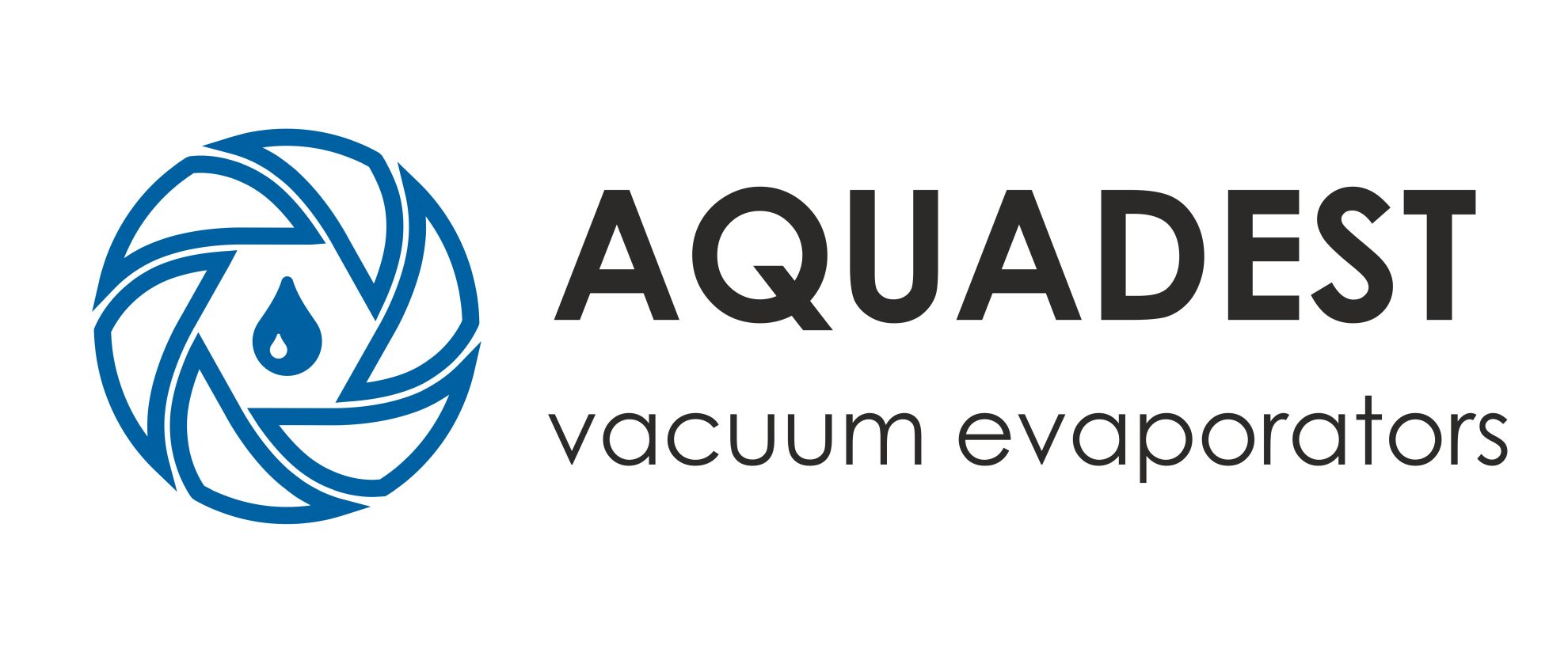 Vacuum evaporation
Vacuum evaporation
Vacuum evaporation is used to increase concentration of substances dissolved in water. Process is based on dependency of boiling temperature of water on air pressure. As opose to clasical distillation, the air pressure in boiling chamber si decreased. This means, that boiling temperature of water is also reduced. Lower boiling temperature requires less energy for heating. That’s why operating costs are very low. Vacuum evaporation has two outputs. The first one is a distillate, clean water, which can be either discharged or recycled back into the production process. The distillate has very low conductivity.
The second output is a concentrate, concentrated solution. The concentrate can be further used if it is a product or it contains valuable substances. If the concentrate is further unusable, it must be proffesionally disposed. Vacuum evaporation can achieve over 90 % volume reduction of waste water. Therefore vacuum evaporators are necessity in Zero Liquid Discharge systems for water recycling in production process. There aren’t required any additive chemicals in vacuum evaporation, which is another reason why vacuum evaporators are very eco-friendly. Automatic 24/7 operation makes evaporators easy to use and maintain.
You can find more about vacuum evaporation on dedicated website AQUADEST.CZ
Go to AQUADEST.CZ
Vacuum evaporators are mainly used in:
- Chemical industry
- Surface treatment
- Machining industry
- Metallurgy
- Food industry
- Pharmaceutical industry
- Photographic industry
- Landfills
Areas of vacuum evaporators application:
- wastewater from die casting
- machining and other emulsions
- wastewater from vibro finishing (tumbling)
- rinse water after hardening in salt baths
- baths and rinse water from degreasing
- baths and rinse water from surface treatment
- exhausted developers and fixers
- reactors, mixers and tanks washing water
- landfill leachate
- eluates from regeneration of ion exchangers
- concentrates from membrane separation processes (reverse osmosis, ultra- a microfiltration)
Classical evaporators
|
|
|
AQUADEST - K Vacuum evaporator with a heat pump AQUADEST - K can be made in following performances:
operational pressure 6 - 7 kPa |
AQUADEST - D Vacuum evaporator with mechanical vapor recompresion heating system AQUADEST - D can be made in following performances:
operational pressure 70 kPa |
Crystallization evaporators
|
|
|
AQUADEST - KR Crystalization vacuum evaporator with heat pump AQUADEST - KR can be made in following performances:
operational pressure 6 - 7 kPa |
AQUADEST - VR Crystalization vacuum evaporator with external heat supply AQUADEST - VR can be made in following performances:
operational pressure 6 - 30 kPa |
Zero Liquid Discharge systems - waste water recycling
The advantages of closed waste water systems:
- reduction of water and sewage costs
- reduction of water consumption
- the most environmentally friendly water management solution in the production sector
Closed circuits can be designed as:
- Partially closed
recycles part of the waste water and thus reduces the production of discharged waste water - Completely closed – Zero Liquid Discharge
all waste water is recycled back into the production process and no waste water is discharged
For the implementation of closed waste water systems, the following is used:
- adsorption on ion exchange resins
- separation of substances by membrane processes
- distillation using vacuum evaporators
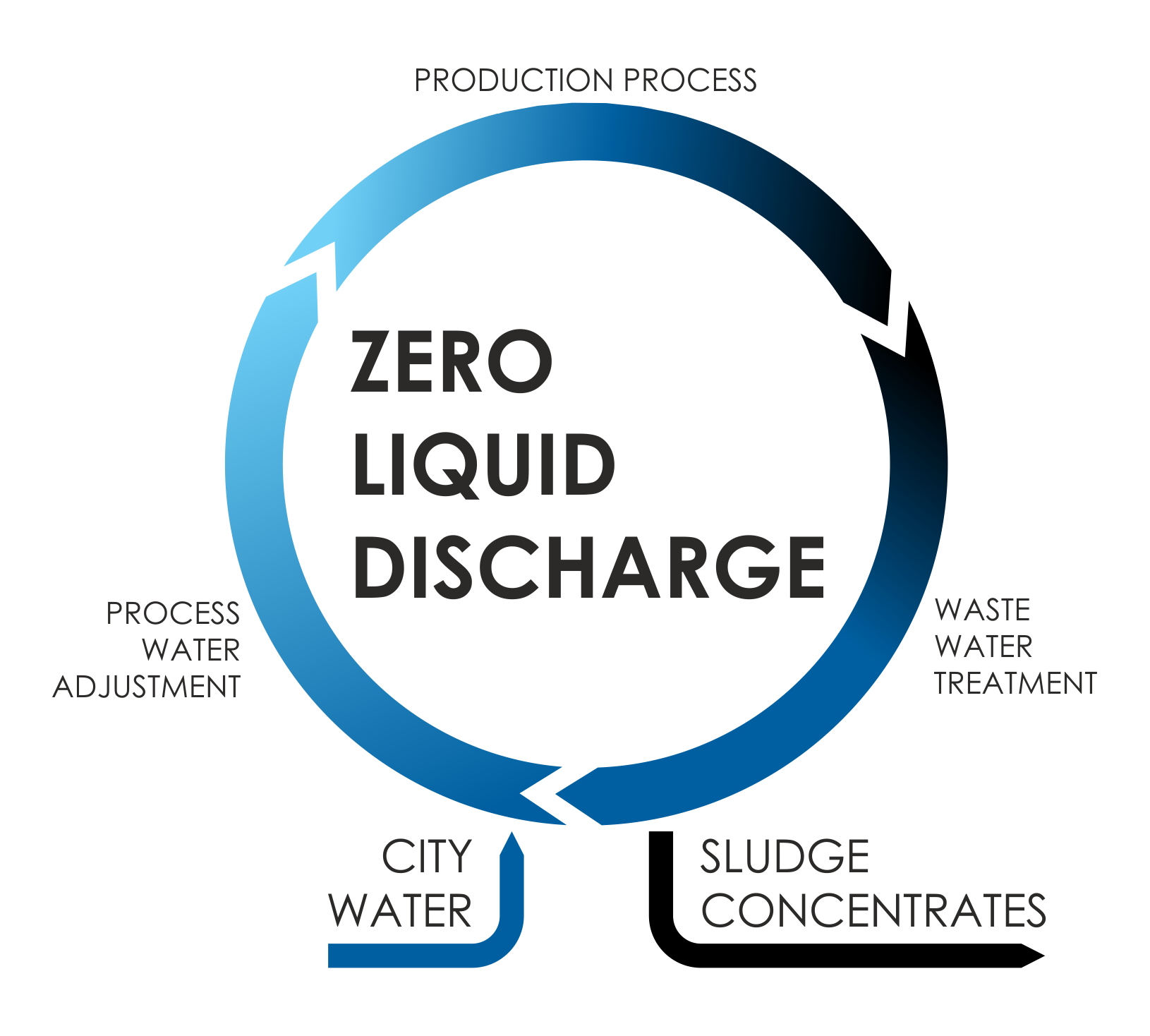
Water audit
The topic of water consumption and management is an increasingly important issue for society as a whole and the operation of companies. Industrial companies are often concerned about inefficiencies in water use, rising consumption and the increasing cost of water and sewerage charges and hazardous waste disposal.
The first step to solve these problems is to prepare a water audit, where our experts identify the problematic areas and suggest solutions. This work is eligible for a grant from the Department of Trade and Industry.
We offer companies the processing of water audits. The result of this study is an analysis and proposal for the rationalization of water flows by the company, the use of rainwater, recycling of process water, etc. The proposed projects lead to the reduction of water consumption and its maximum use within the company.








